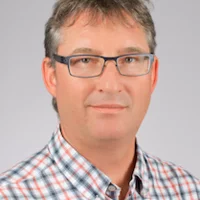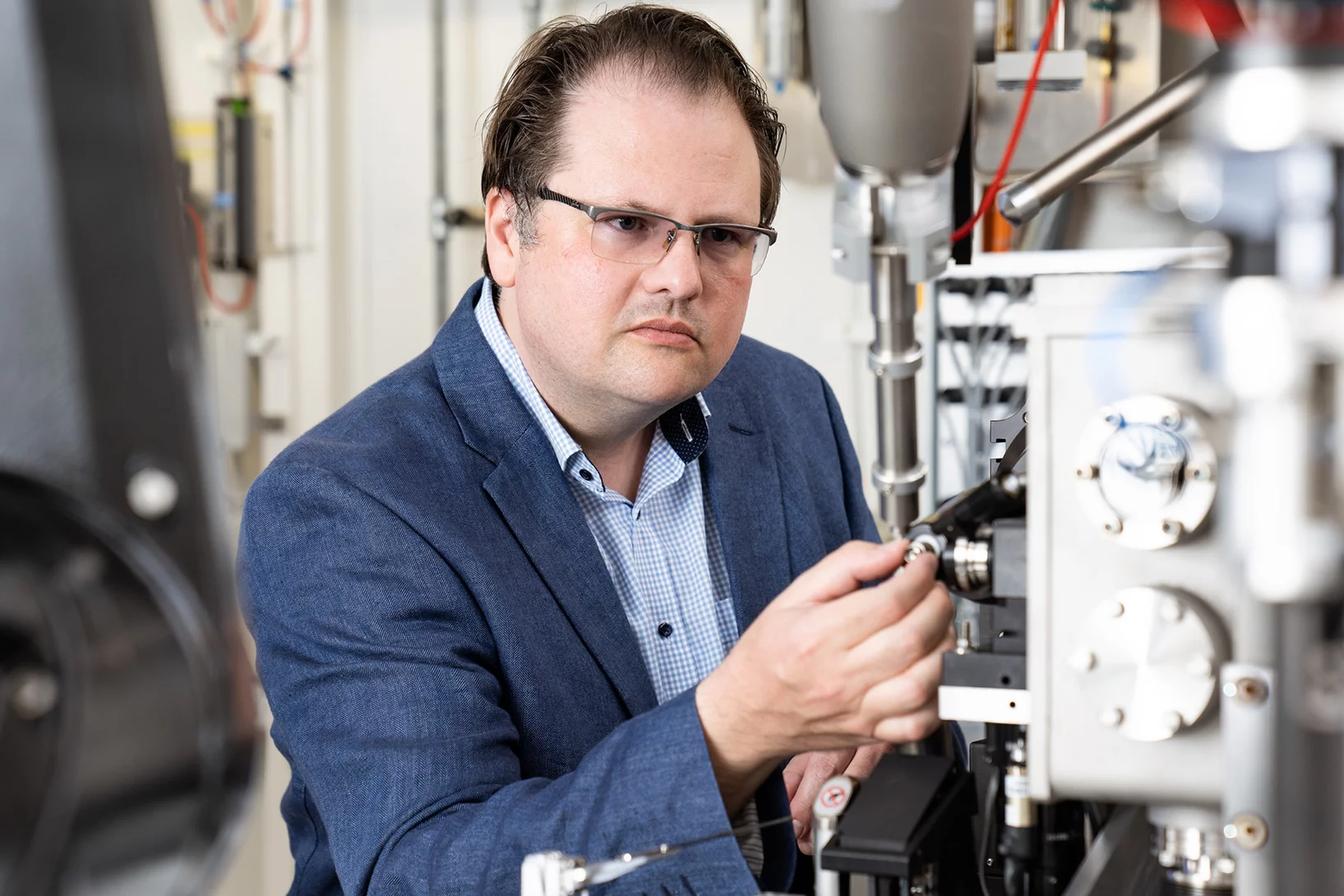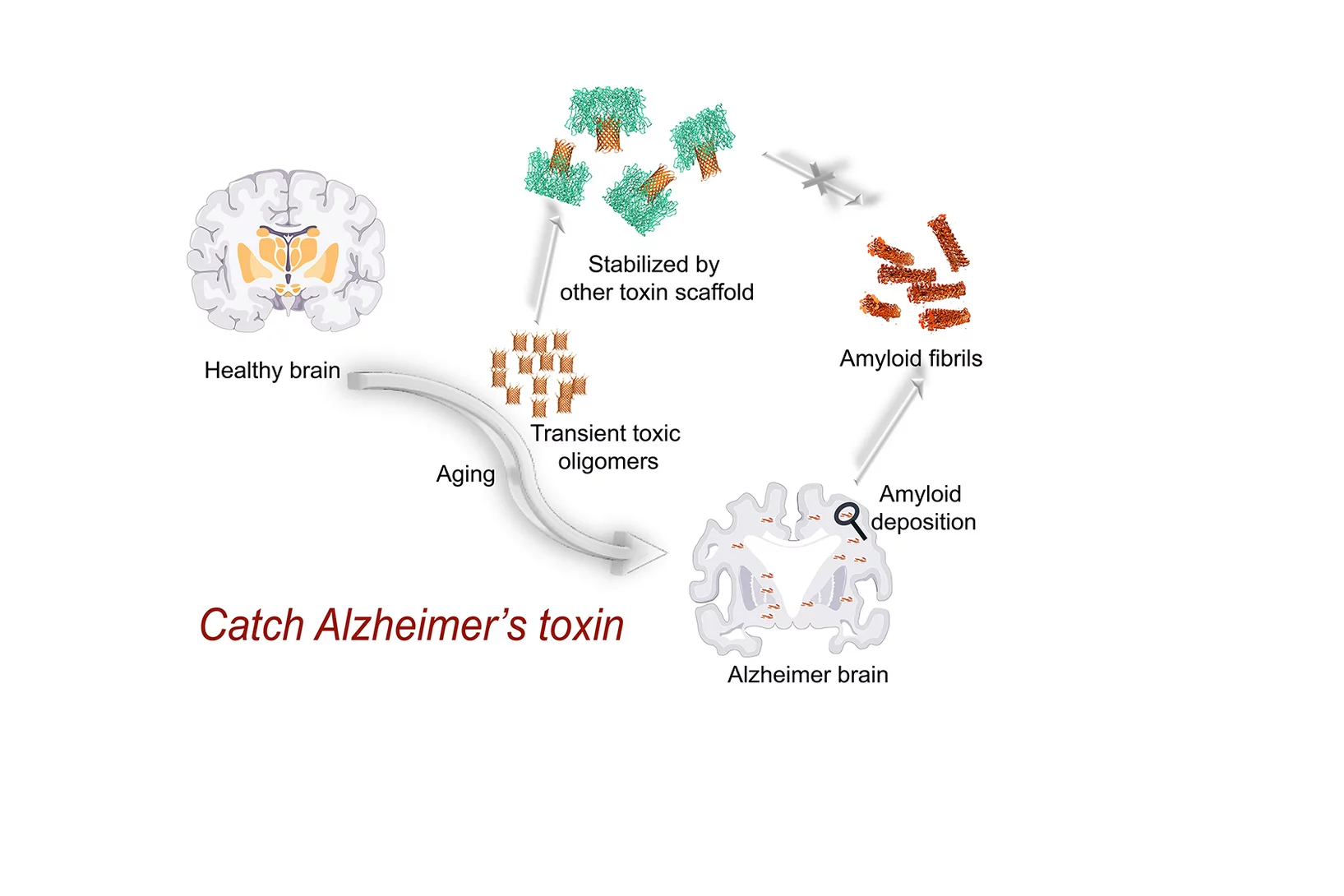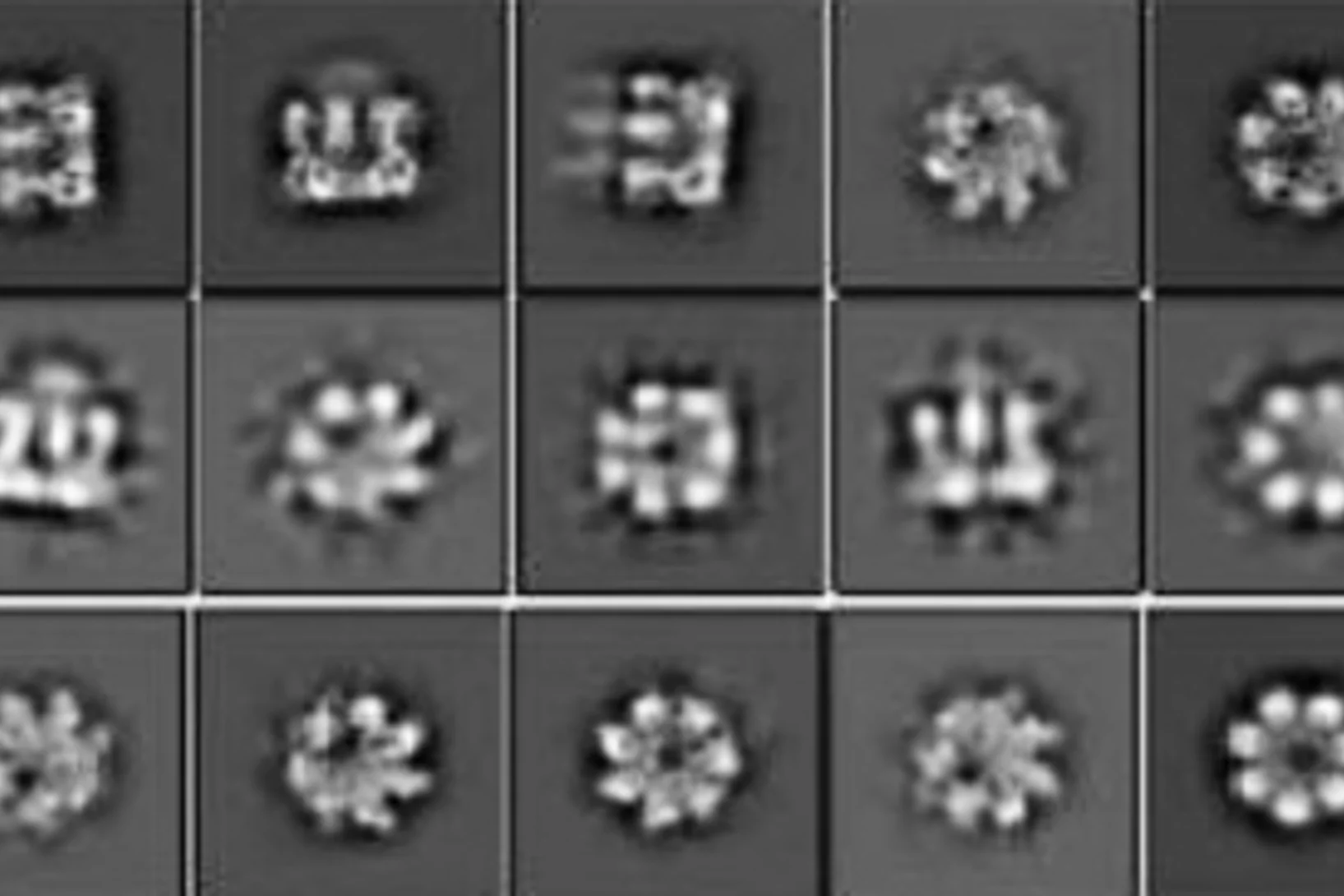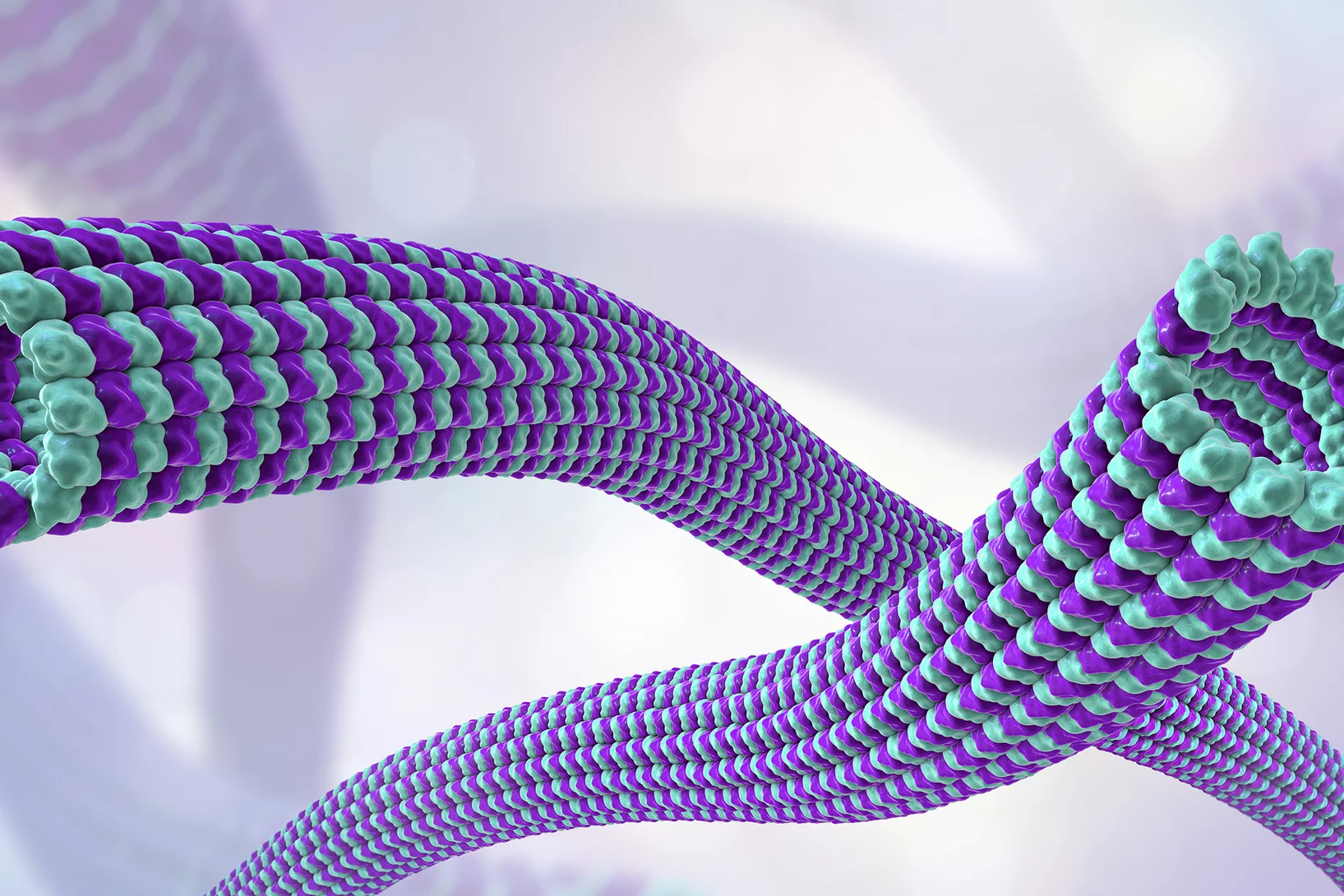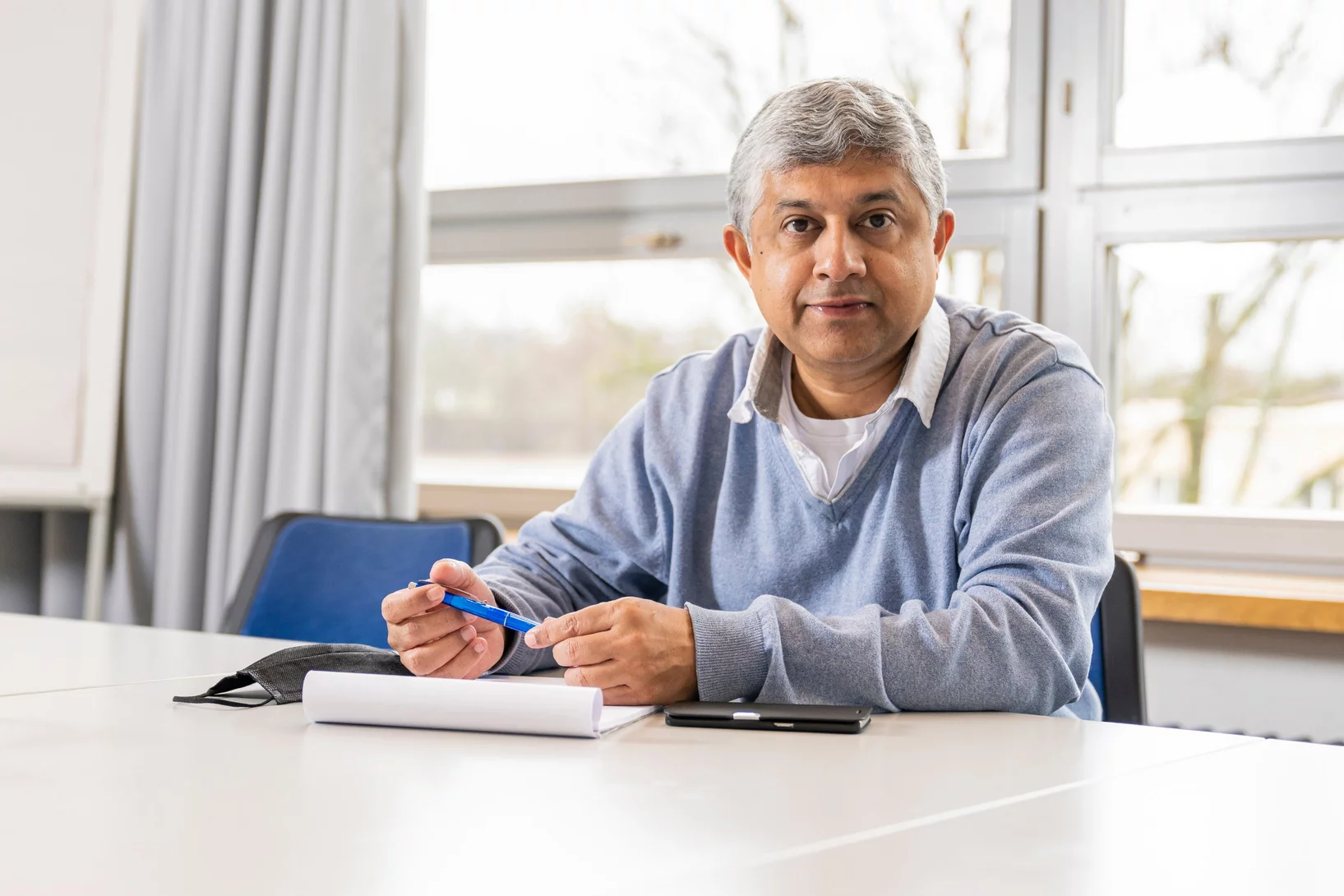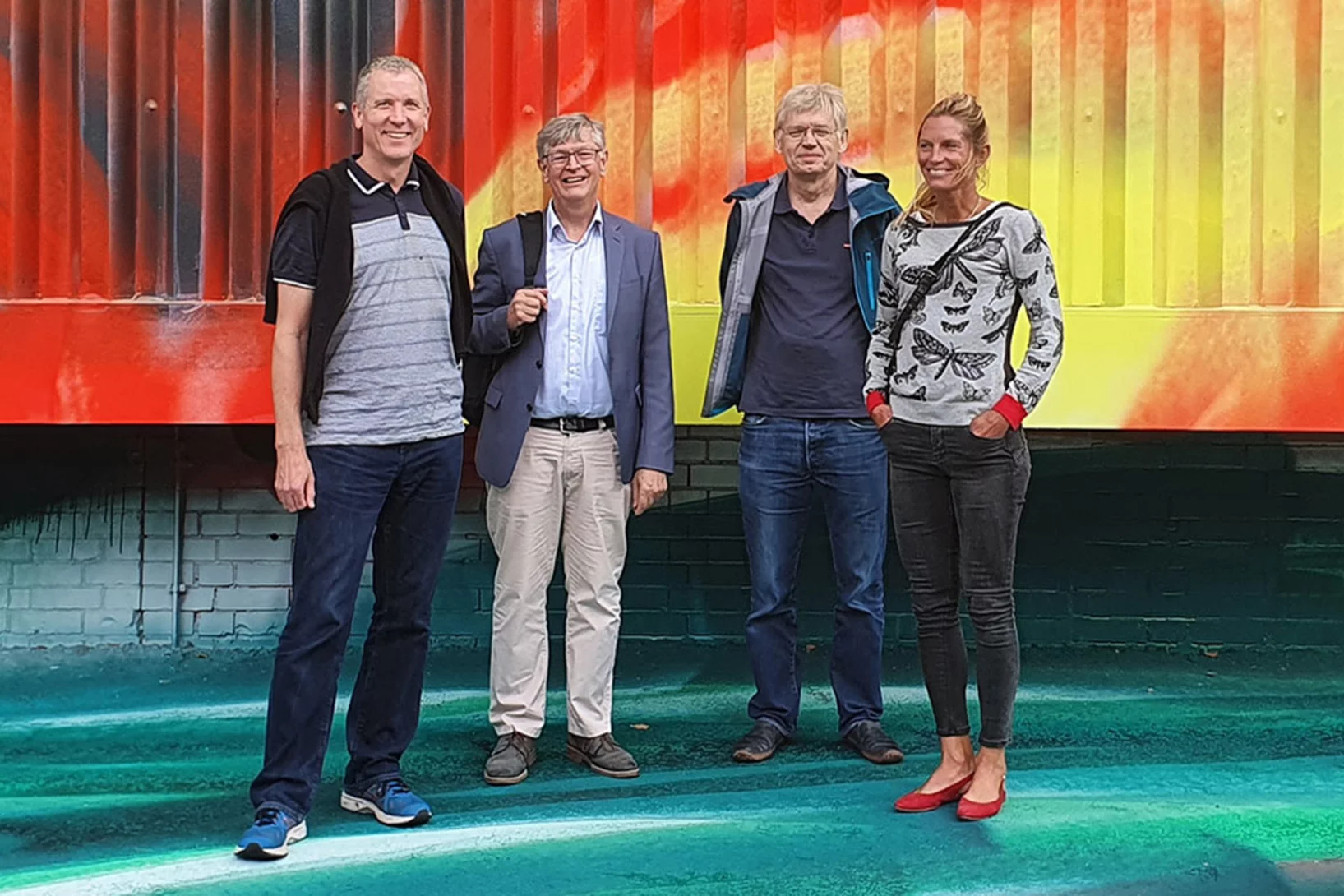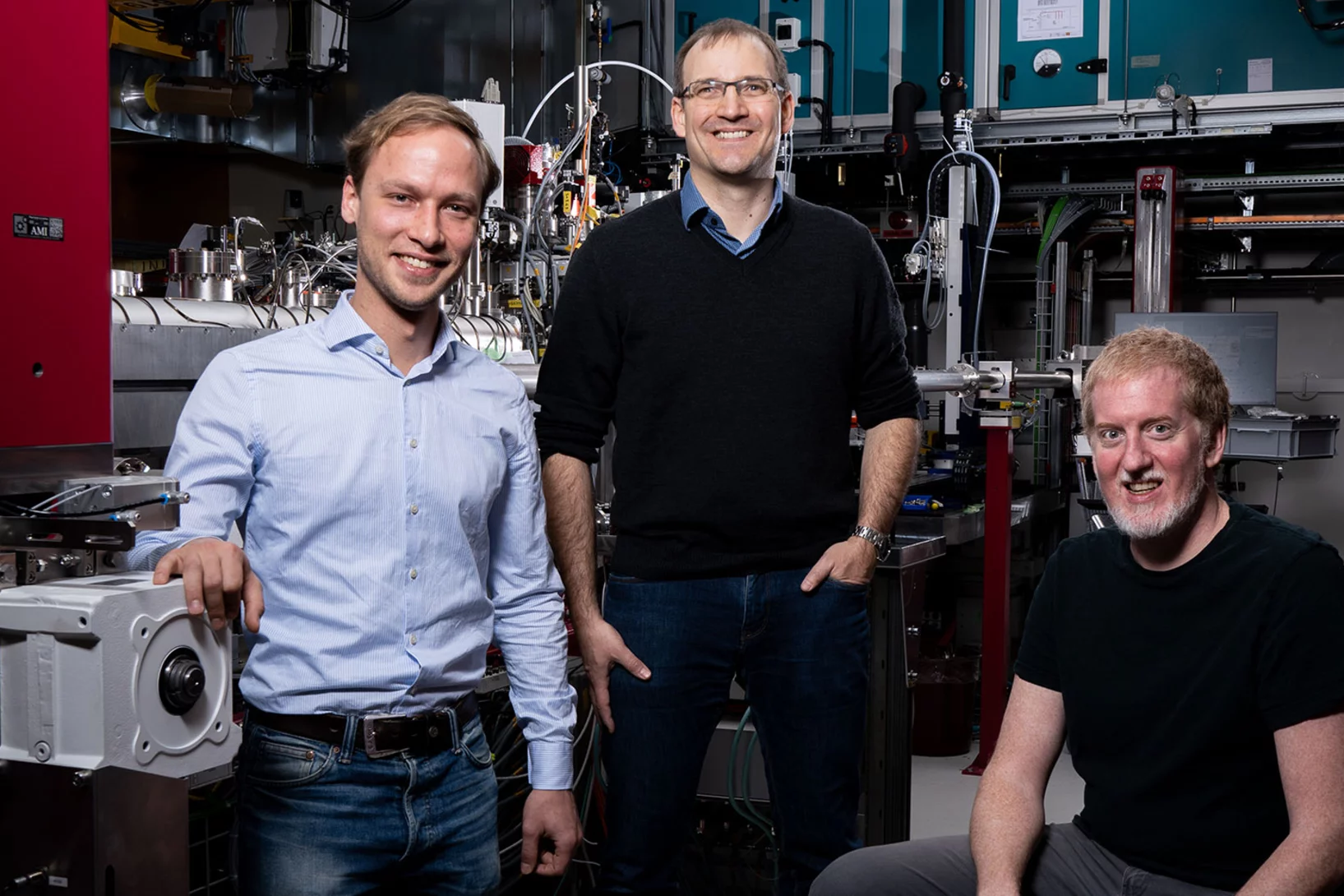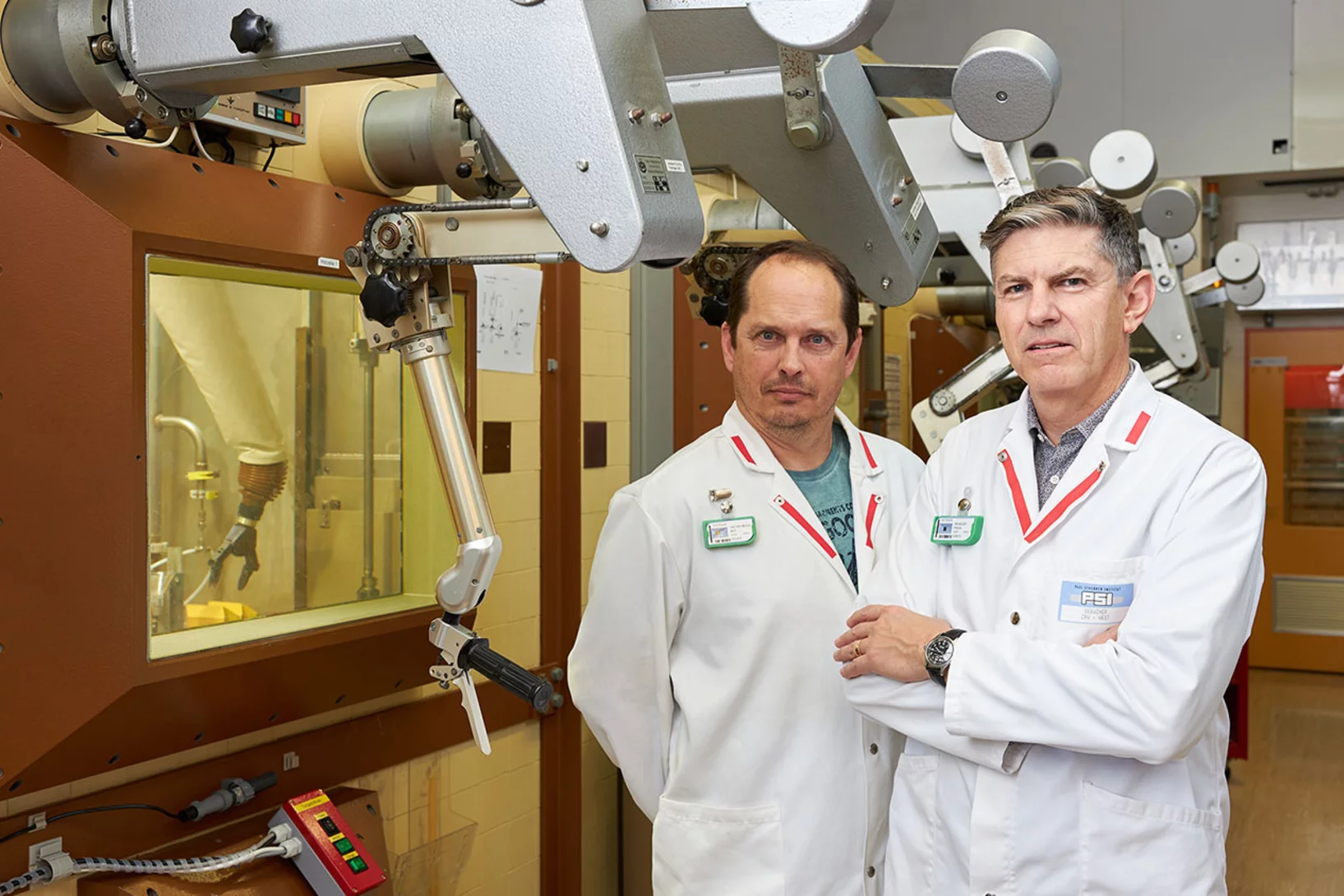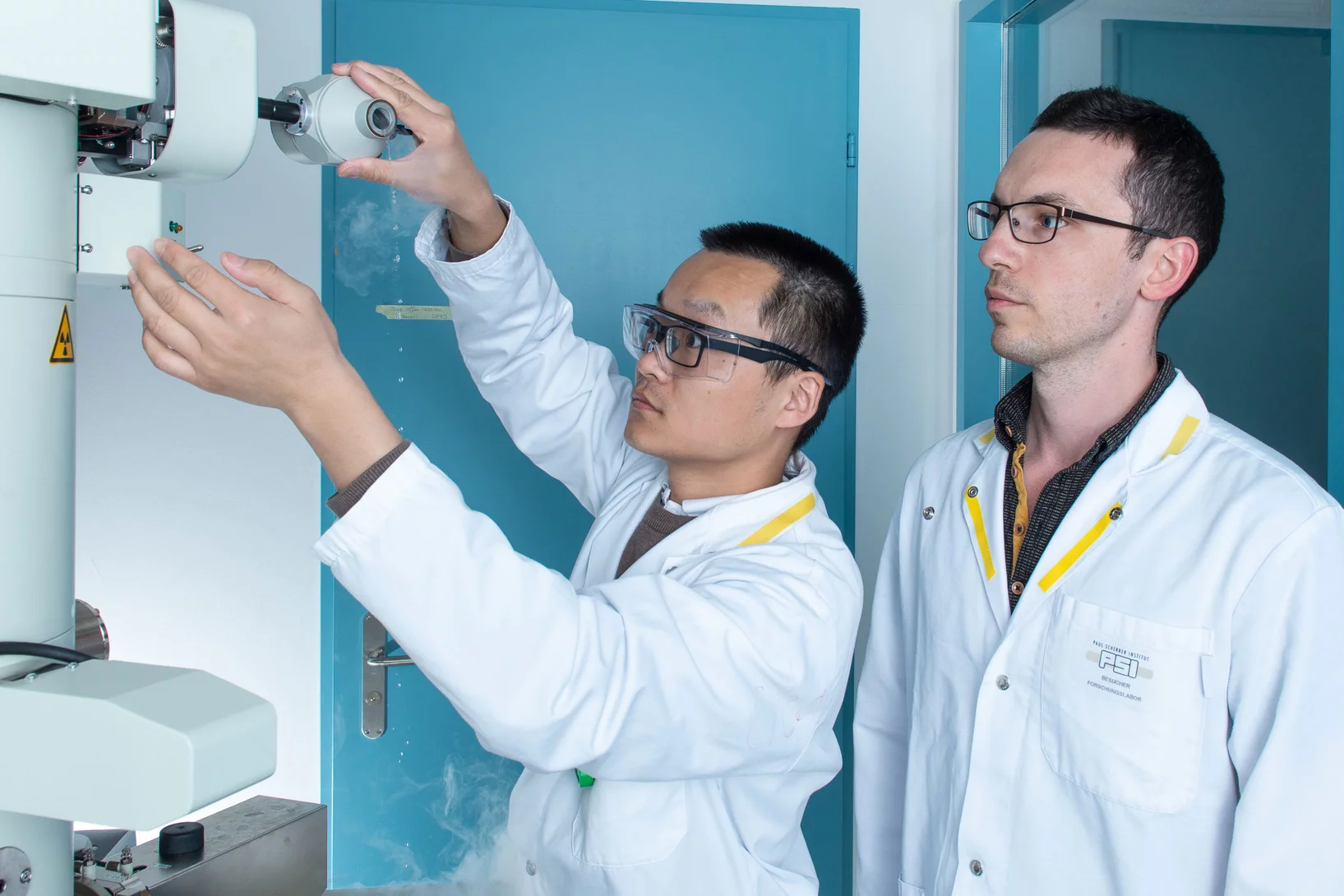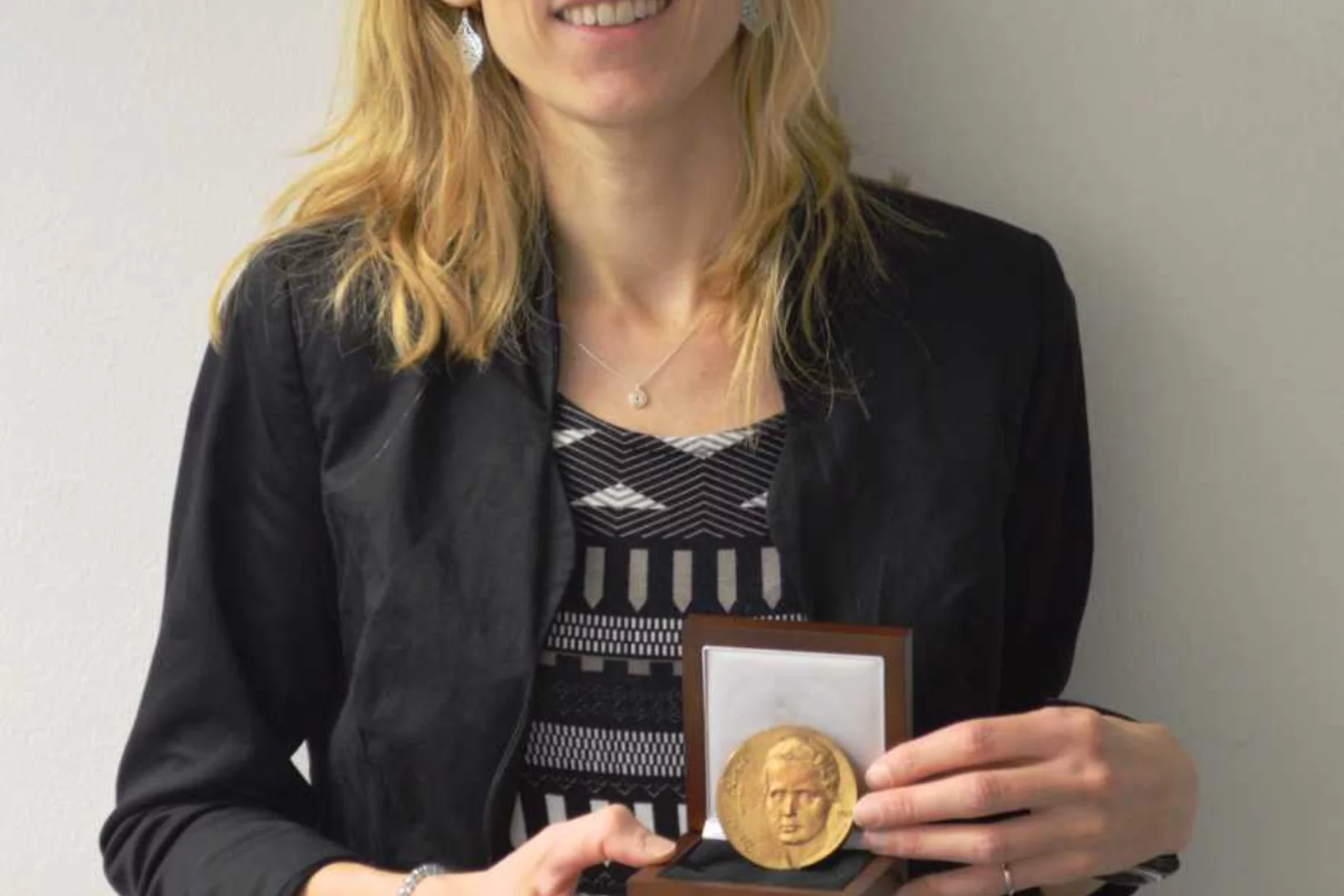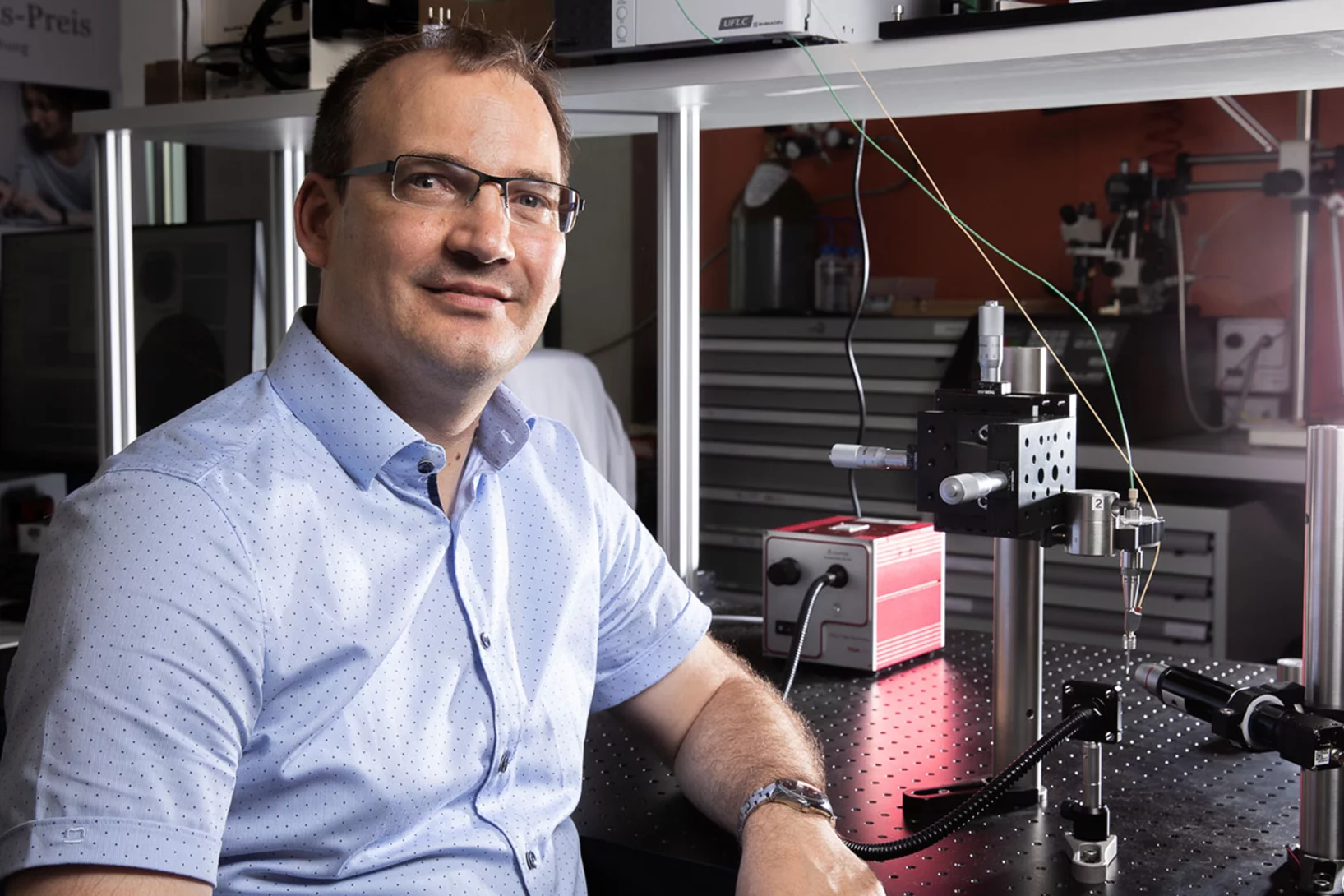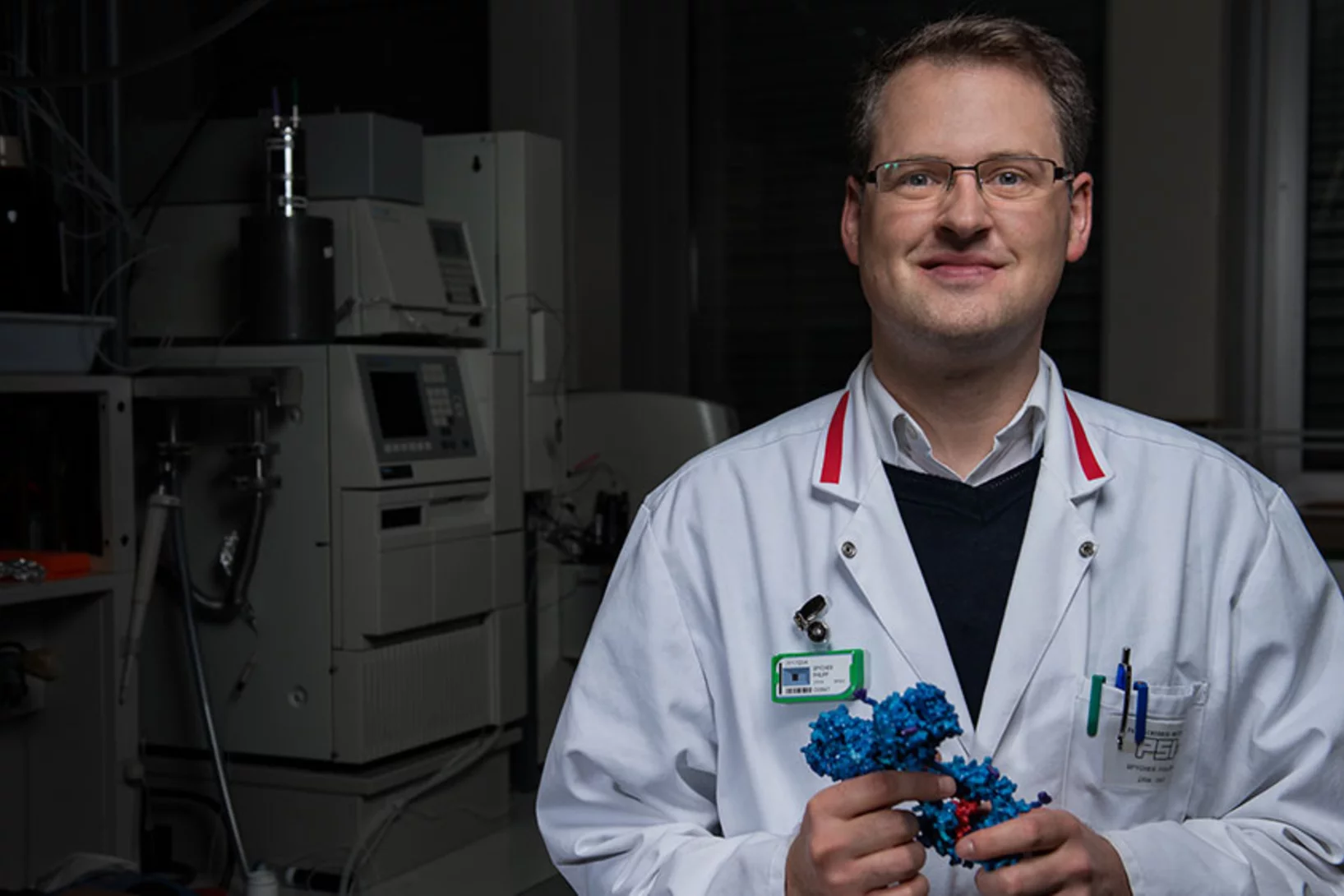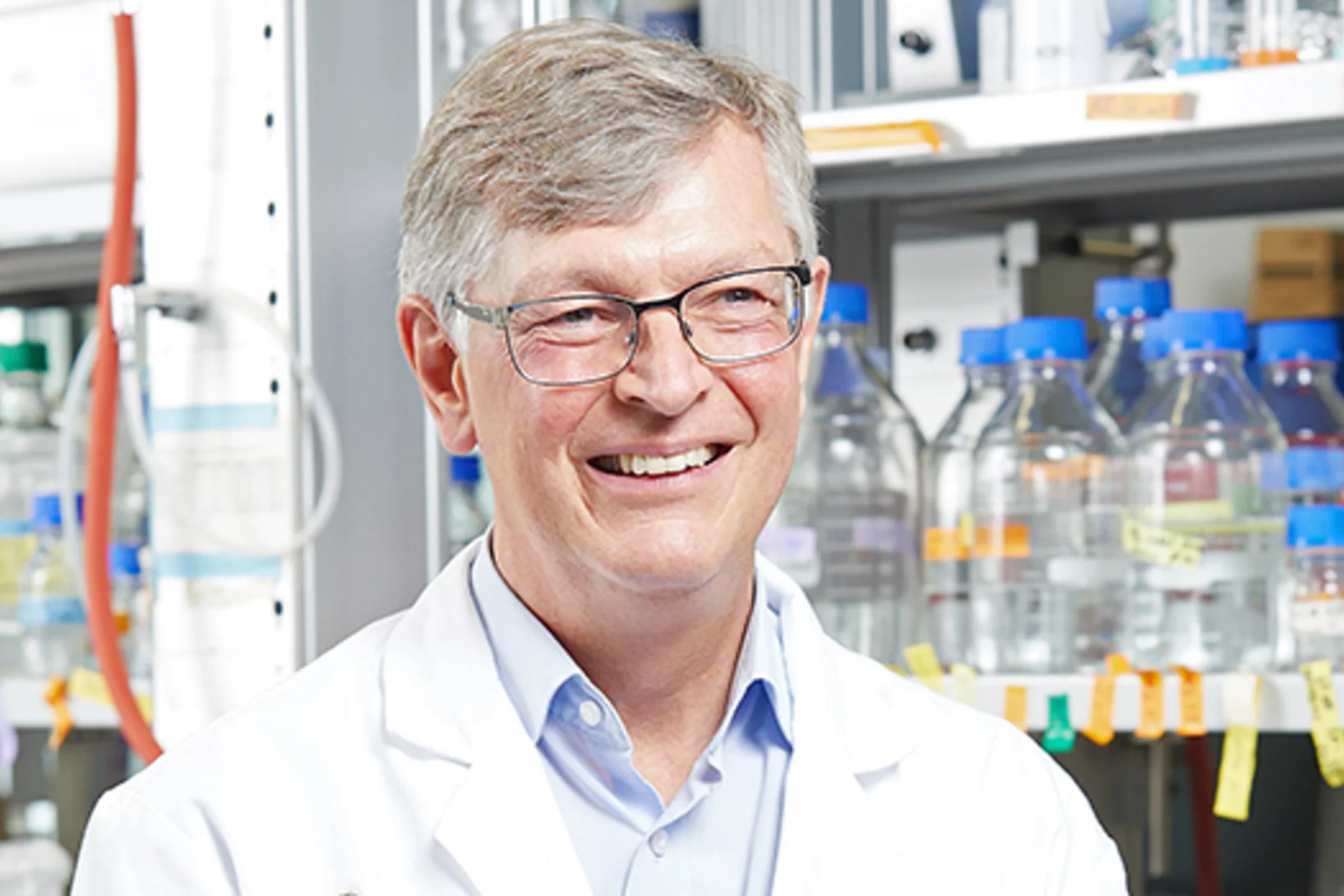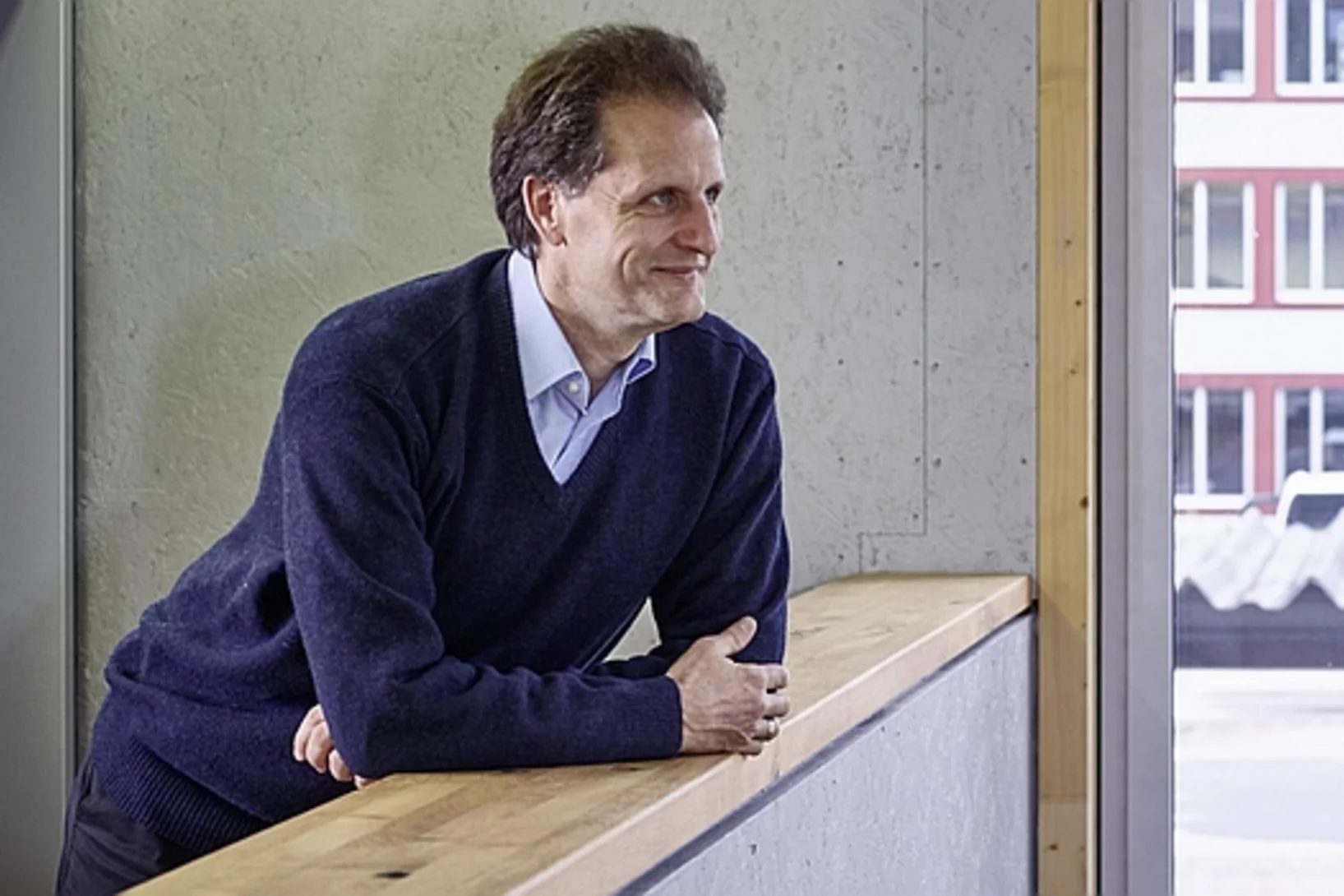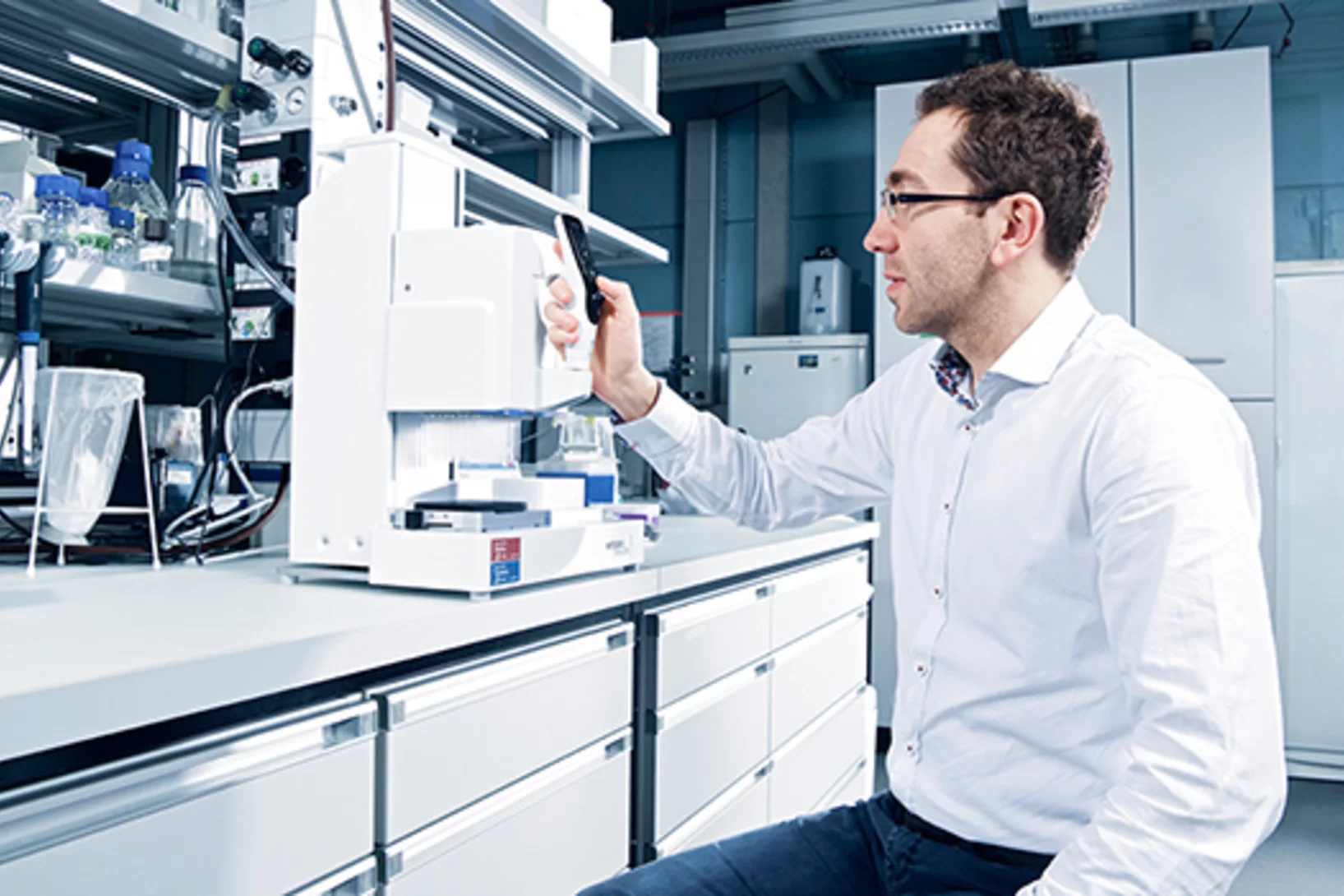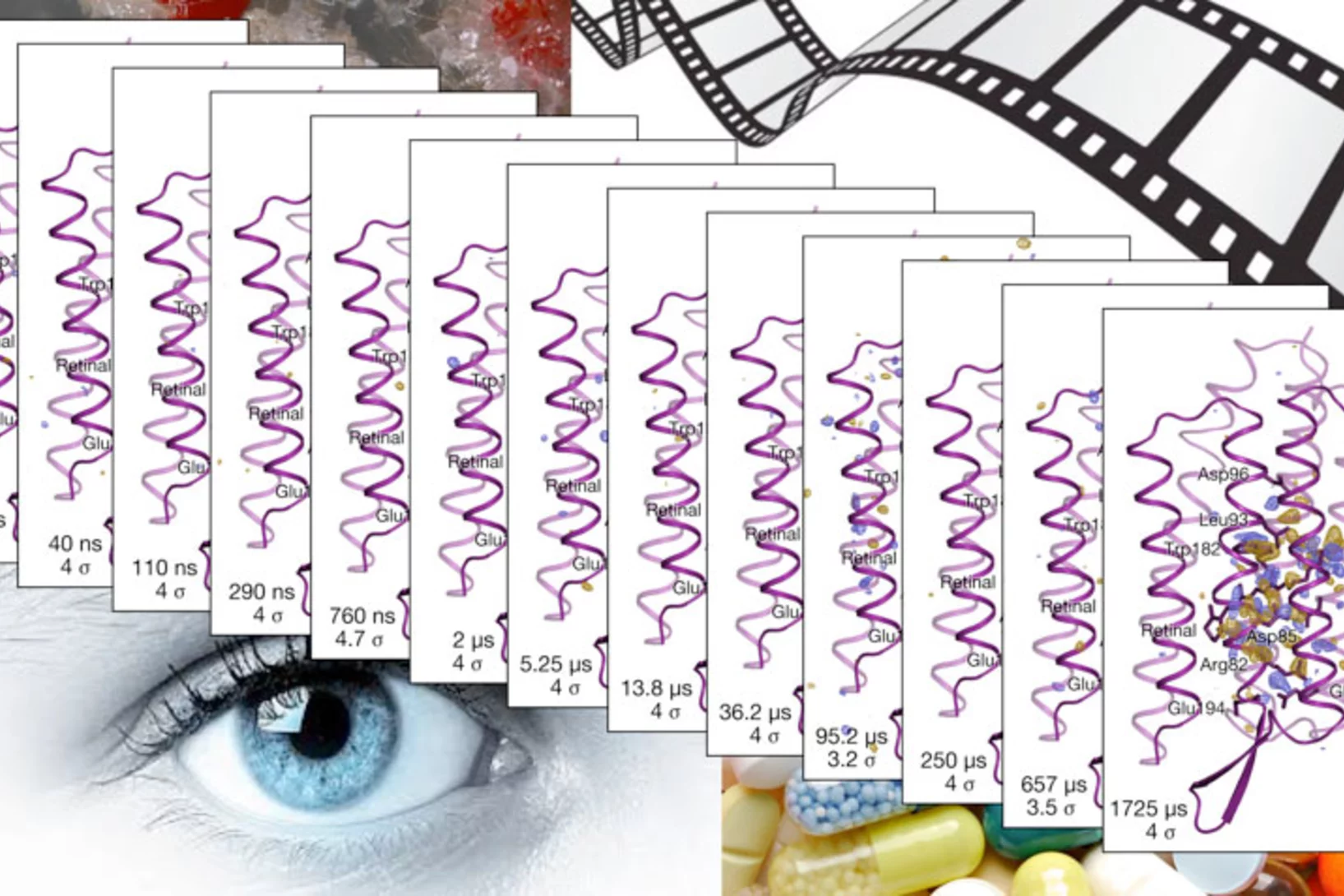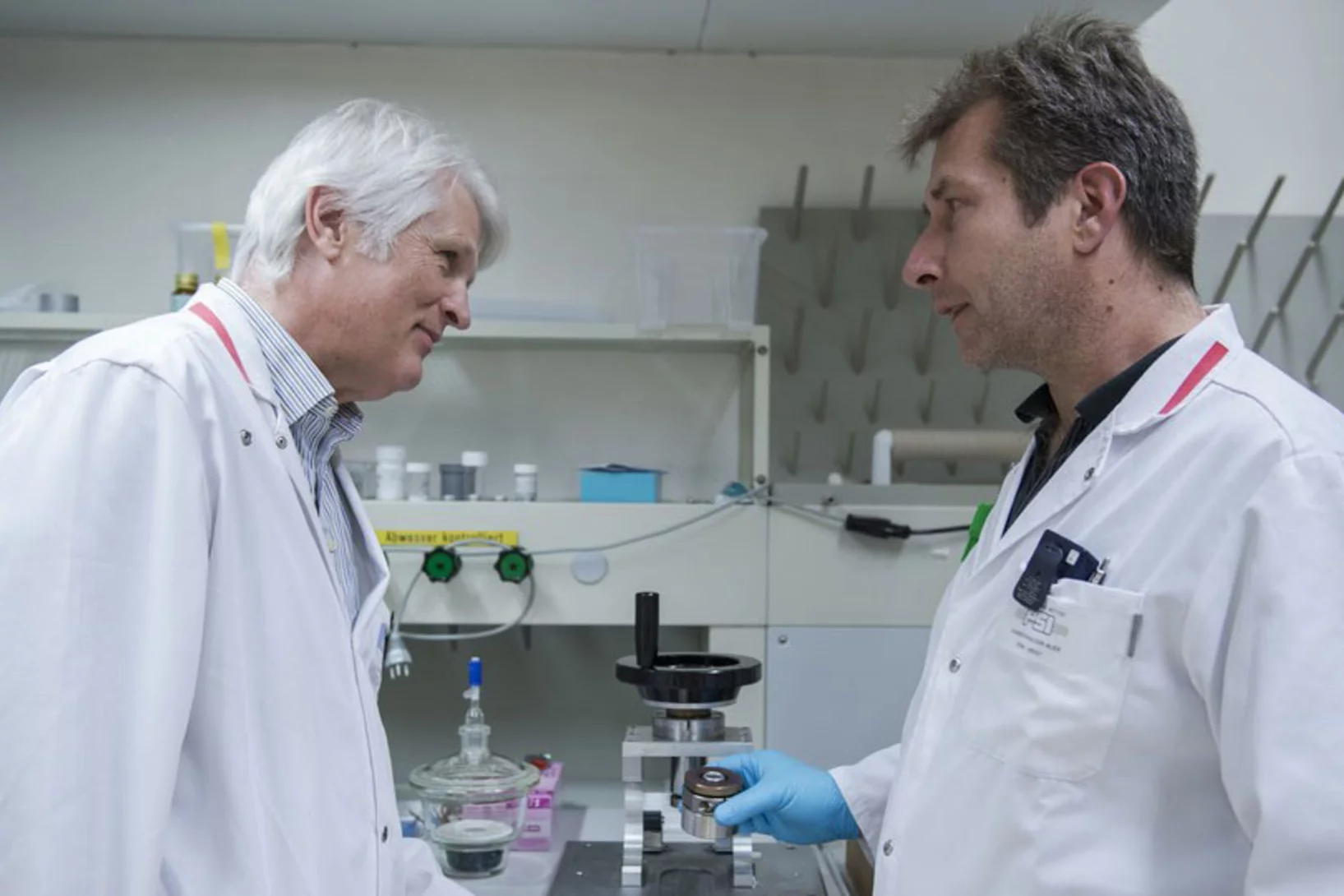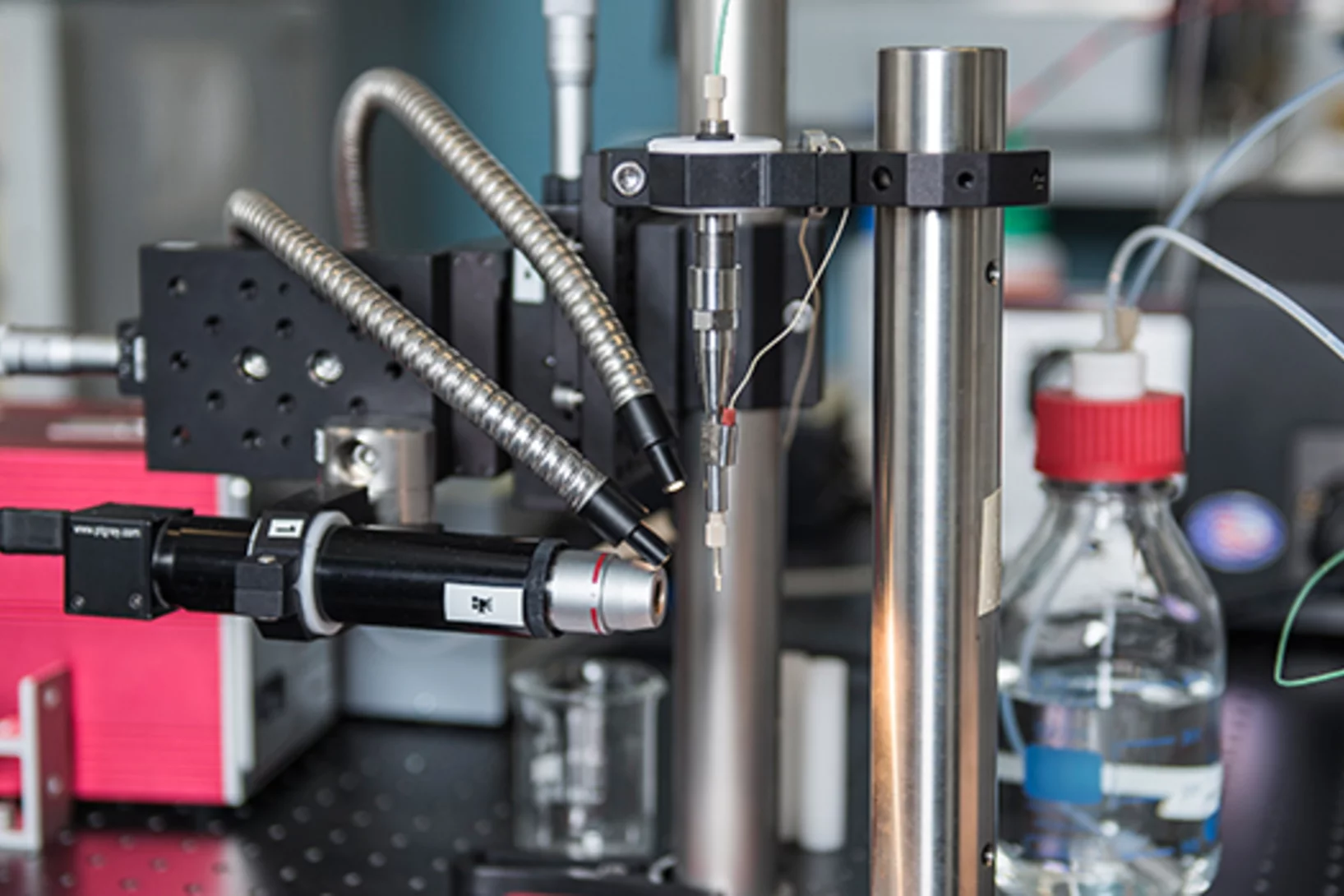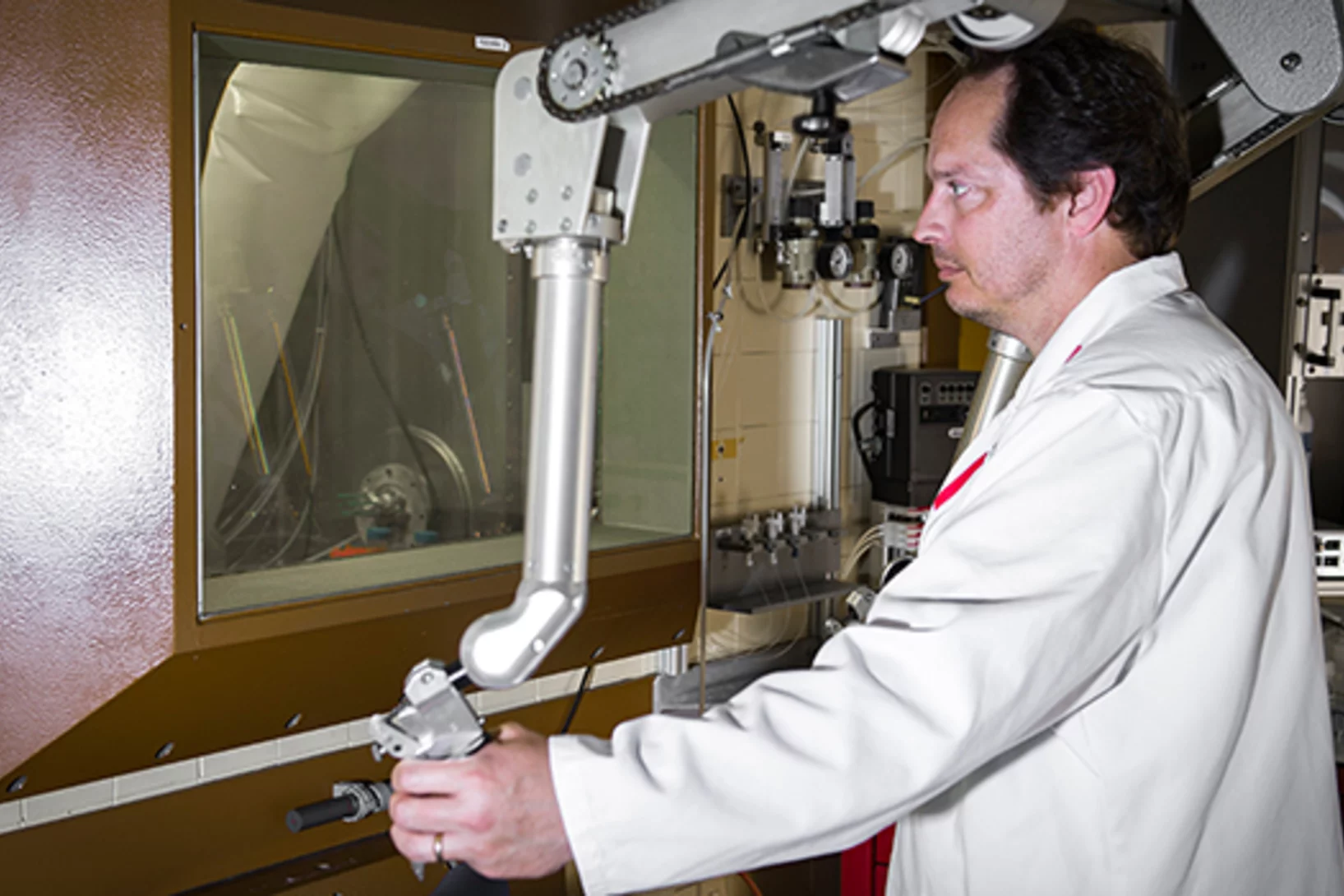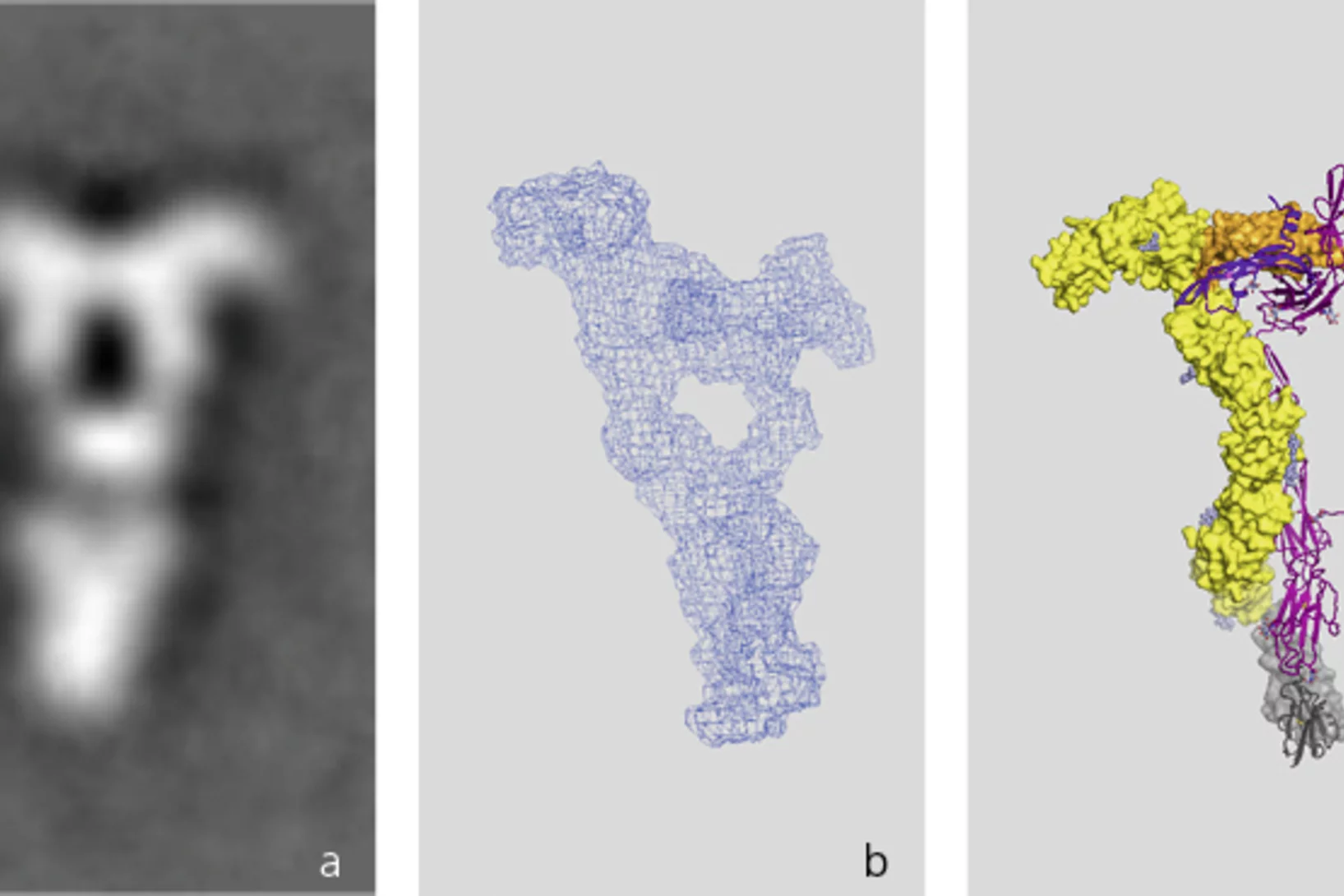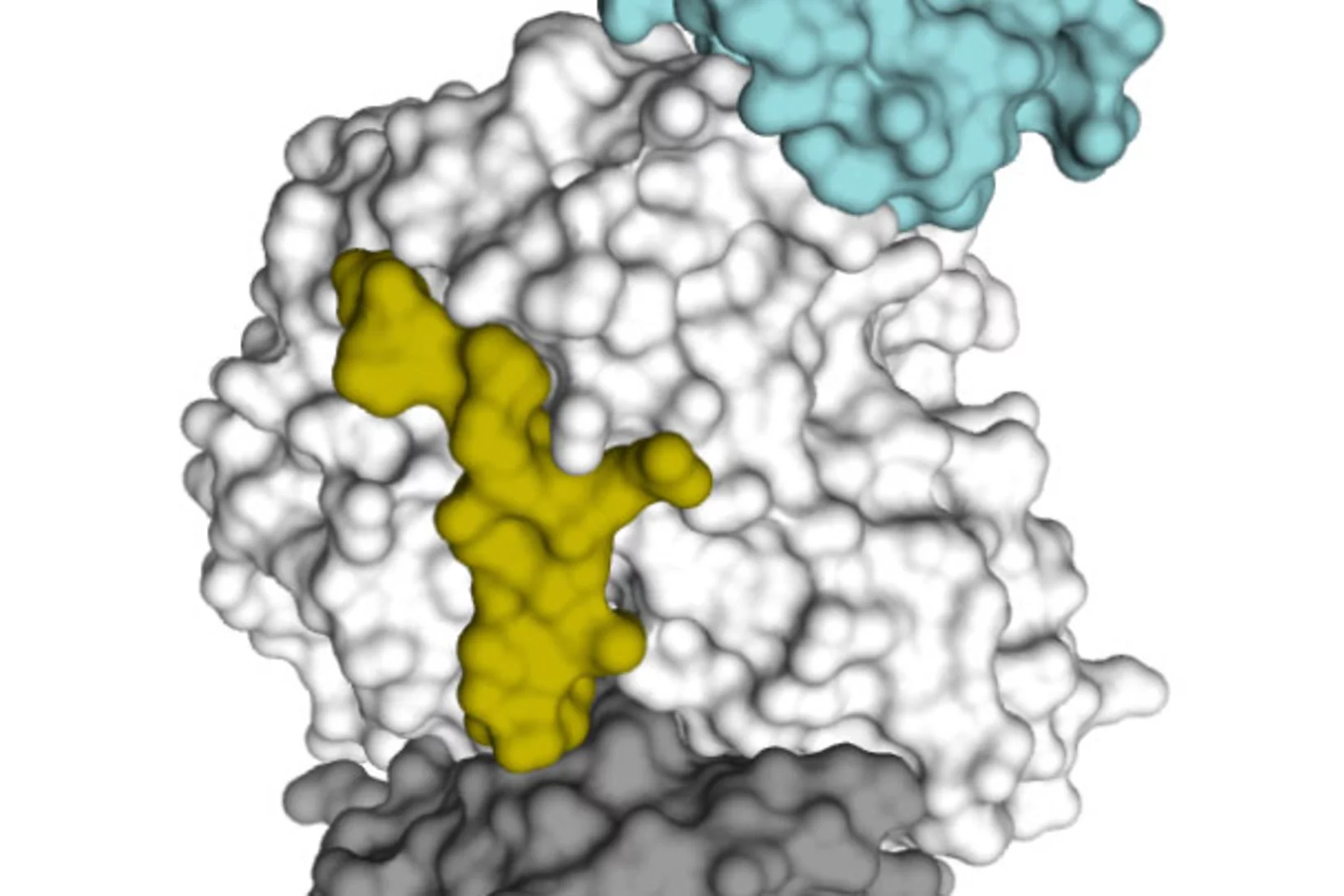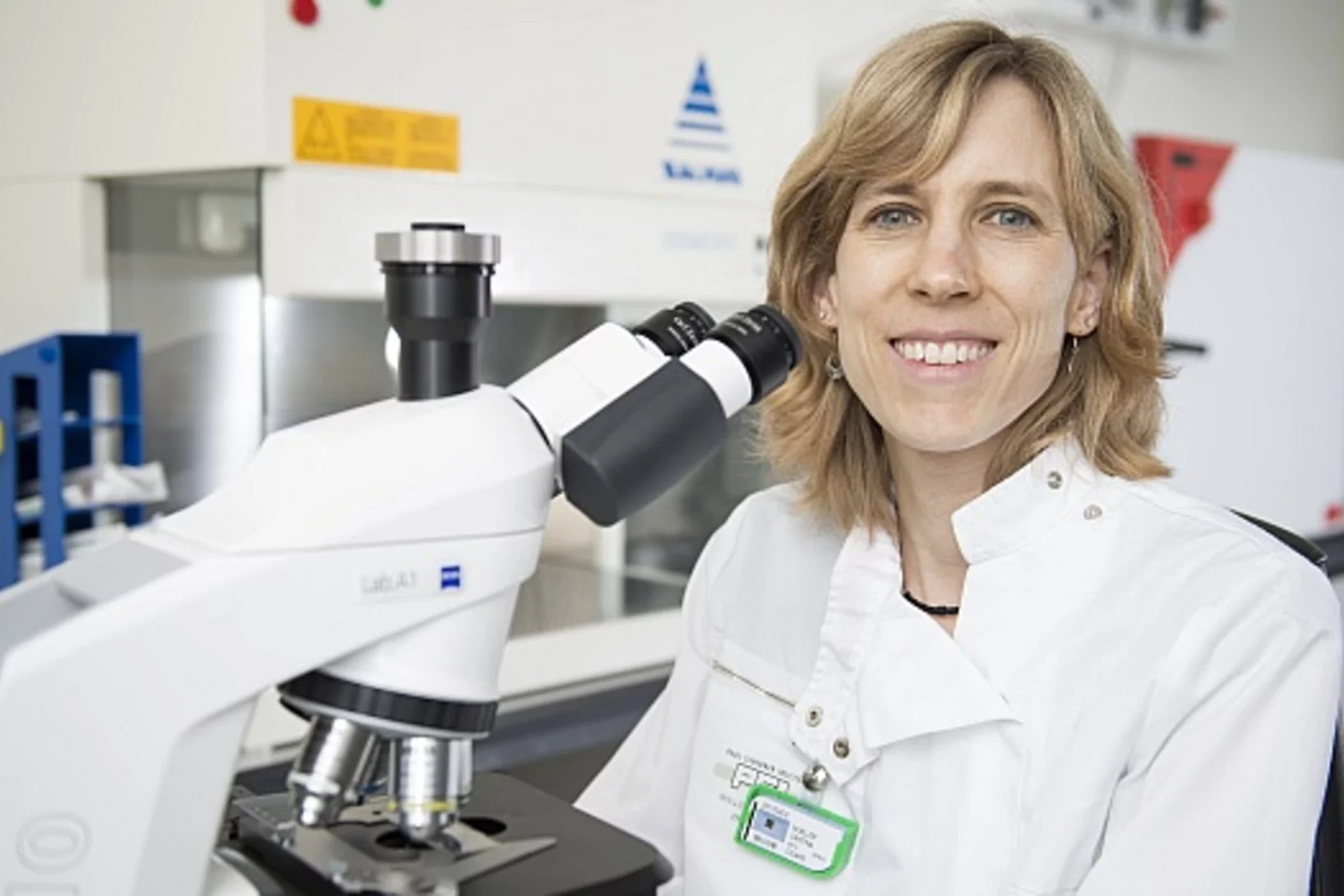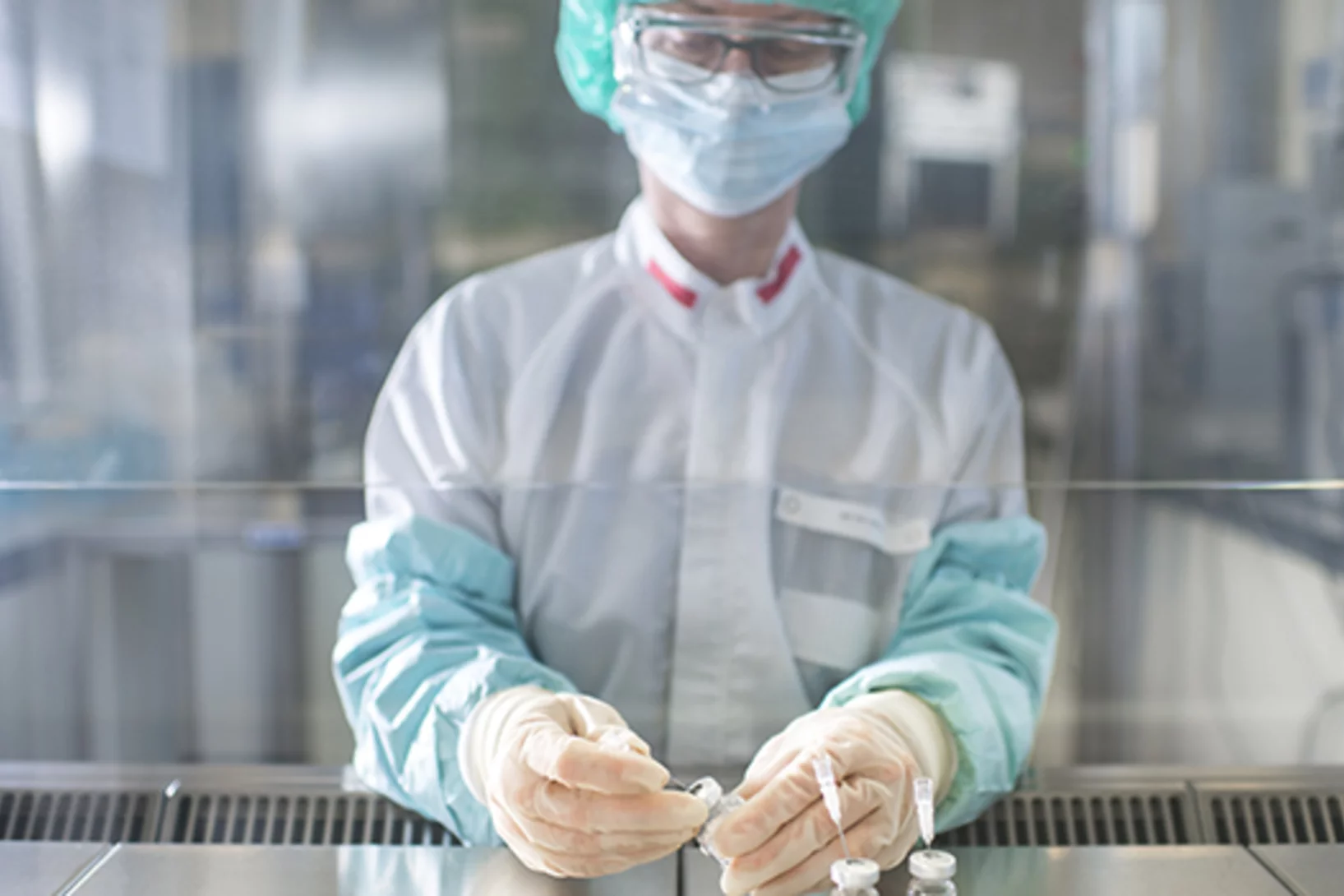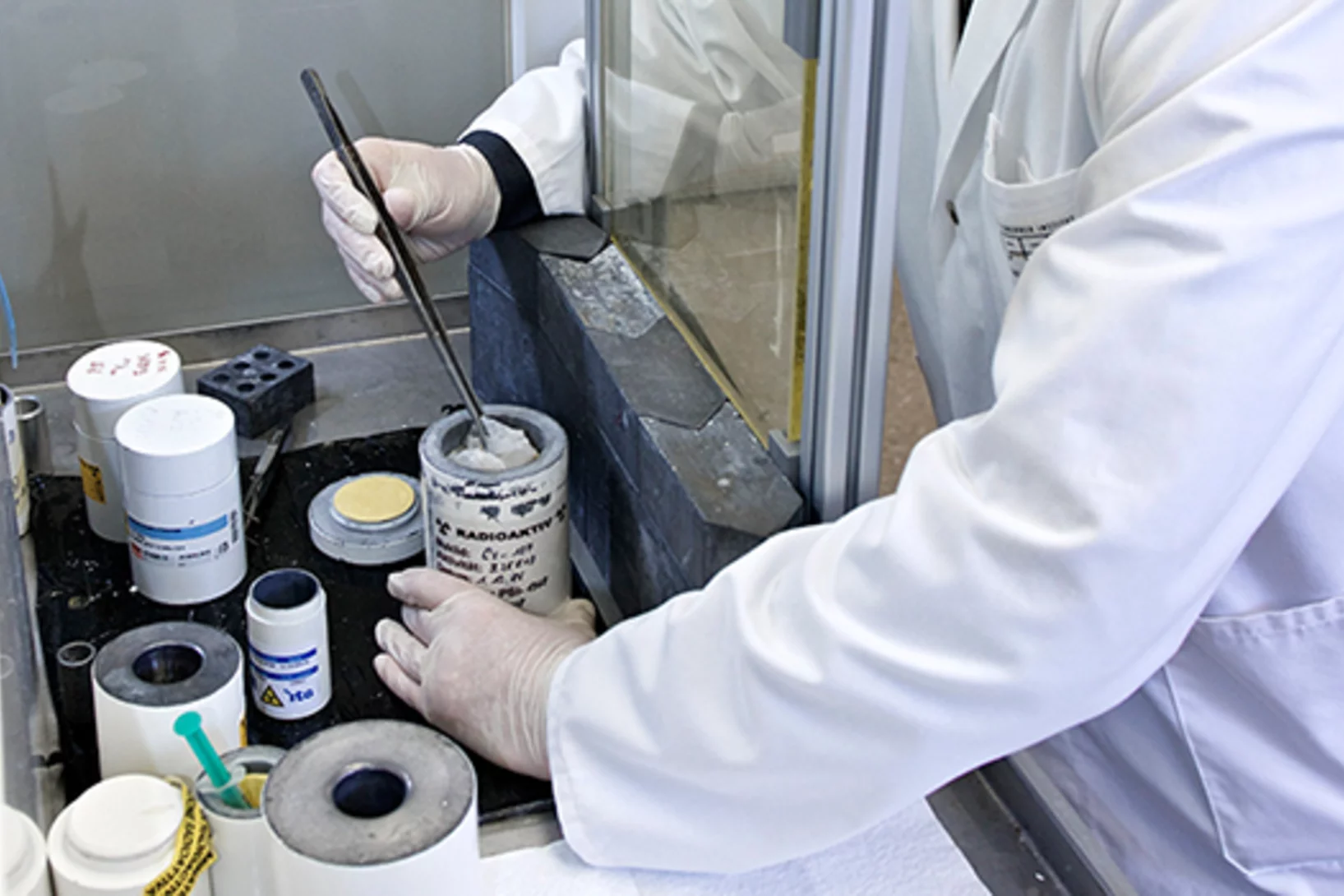Protein distancing
PSI researchers have developed a new method to attach proteins to the surface of virus-like particles.
A strong commitment for science communication
PSI is engaging in public outreach at a major event in Zürich, the "Scientifica" Science Days September 4 and 5.
Prof. Dr. Roger Schibli has been elected a Council Member 2020-2022 of the European Society for Molecular Imaging - ESMI
European Society for Molecular Imaging - ESMI
The ESMI represents and advocates IMAGING SCIENCE
The ESMI is providing an international, interdisciplinary platform for knowledge exchange in the field covering basic sciences, translational aspects as well as clinical applications.
Catching Alzheimer's Toxin
Single-particle cryo-electron microscopy of a functional Aβ42 pore equivalent, created by fusing Aβ42 to the oligomerizing, soluble domain of the α-hemolysin toxin, offers new insights into structure and function of proteins forming amyloid aggregates in Alzheimer’s disease.
Cell cytoskeleton as target for new active agents
Using a combination of computer simulations and laboratory experiments, PSI researchers have identified new binding sites for active agents on the vital protein tubulin.
"Ultimately, we aim to understand how diseases start in single cells"
Imaging and sequencing techniques combined with machine learning offer researchers countless opportunities to look inside cells with greater precision than ever before. G.V. Shivashankar, lab head at PSI, describes how such information can be used to find answers to pressing questions.
PSI Thesis Medal 2021 for pioneering Structural Biology at SwissFEL
Dr. Petr Skopintsev received PSI Thesis Medal 2021 for his work on the sodium pump KR2.
A new generation of optogenetic tools for research and medicine
The European Research Council (ERC) is funding an interdisciplinary collaborative project with 10 million euros for the structural and biophysical analysis of selected photoreceptors and their development into "OptoGPCRs", light-controlled molecular switches with a wide range of applications in biology and medicine.
Elucidating the mechanism of a light-driven sodium pump
Researchers at the Paul Scherrer Institute PSI have succeeded for the first time in recording a light-driven sodium pump from bacterial cells in action. The findings promise progress in developing new methods in neurobiology. The researchers used the new X-ray free-electron laser SwissFEL for their investigations.
Cancer medicine using PSI’s neutron source
At the neutron source SINQ, PSI researchers are producing special radionuclides that aid in the development of new and more effectively targeted cancer therapies. In this they collaborate closely with the clinics in the surrounding area.
Bringing information into the cell
Researchers at the Paul Scherrer Institute PSI have elucidated an important part of a siganalling pathway that transmits information through the cell membrane into the interior of a cell. This exists in all mammals and plays an important role, among other things, in the regulation of the heartbeat. The new findings could lead to new therapies.
Cristina Müller (CRS) receives the Marie Curie Award
The Marie Curie Award, the most prestigious price by the European Association of Nuclear Medicine, has been awarded in 2018 for the project "Terbium-161 for PSMA-Targeted Radionuclide Therapy of Prostate Cancer", lead by Christina Müller in collaboration with Nick van der Meulen (LRC/NES) EANM-Website(link is external).
Araris Biotech among top 5 in business plan ranking at >>venture2018>>
Araris Biotech, a Spin-Off company in foundation from the Center for Radiopharmaceutical Sciences (Prof. Roger Schibli) at the BIO division, has been ranked in the TOP5 in the business plan competition of >>Venture>>(link is external). Araris is focusing on the development of a new method for the generation of antibody-drug conjugates (ADCs) with a well-defined, optimal antibody-to-drug ratio. The technology will be used to establish a drug development platform for targeted therapies and diagnostic applications. more info(link is external)
Biological light sensor filmed in action
Using X-ray laser technology, a team led by researchers of the Paul Scherrer Institute PSI has recorded one of the fastest processes in biology. In doing so, they produced a molecular movie that reveals how the light sensor retinal is activated in a protein molecule. Such reactions occur in numerous organisms. The movie shows for the first time how a protein efficiently controls the reaction of the embedded light sensor.
Hollywood in the Würenlingen woods
With the X-ray laser SwissFEL, researchers at PSI want to produce movies of biomolecules in action. This can reveal how our eyes function or how new drugs work.
Petersen Investigator award in 2018 goes to the Center for Radiopharmaceutical Sciences at PSI
The Neuroendocrine Tumor Research Foundation (NETRF) is committed to funding the most promising research in order to discover cures and more effective treatments for carcinoid, pancreatic, and related neuroendocrine cancers. In January 2018 the Board of Directors has awarded a Petersen Investigator award to the team of Professor Roger Schibli for their research proposal titled, “Simultaneous Auger-Electron and β--Particle Therapy of Metastasized NET Using 161Tb-DOTATOC”. more info(link is external)
A new bio-robot
With a new method for modifying antibodies, Philipp Spycher, winner of a Founder Fellowship at the Paul Scherrer Institute PSI, wants to develop drugs that are more stable and, thus, have fewer side-effects.
Highlighting the significance of structural analysis of biomolecules
The Nobel Prize in Chemistry 2017 has been awarded to Jacques Dubochet of Switzerland, U.S.-based German scientist Joachim Frank, and Richard Henderson of the United Kingdom for the development of structural analysis of single biological molecules by means of cryo-electron microscopy. The awarding of the prize underscores the fundamental significance of structural analysis of biomolecules for modern biology – a research area where the Paul Scherrer Institute PSI plays a leading role in Switzerland.
Award for the Best Poster at the 8th Annual World ADC
PSI Founder Fellow Philipp Spycher from the Group of Pharmacology at the Laboratory Center For Radiopharmaceutical Sciences (CRS) received the Award for the Best Poster at the 8th Annual World ADC (antibody-drug conjugate) conference San Diego (USA) from 20 to 22 September 2017. The poster on his latest work "Enzymatic (dual) site-specific conjugation of engineered and native antibodies" was highlighted as an exceptional poster with the highest impact in the field and Philipp was given the opportunity for a short-fire presentation in front of the whole plenum.
In start-up companies, getting it done is a matter of survival
A pharmaceuticals manager at Roche for a long time, now he is the founder of a biotech firm on the campus of the Paul Scherrer Institute PSI: Michael Hennig knows the trends in the medical sector. In this interview he explains why the medicine of the future needs the innovation power of publicly funded research, and why he chose to locate his start-up leadXpro so close to PSI.
In cold water
Martin Ostermaier wanted to break out of the comfort zone of science. Now, instead of pipettes, the biochemist is dealing with investors and patent law.
A three-dimensional movie of structural changes in bacteriorhodopsin
Snapshots of bacteriorhodopsinBacteriorhodopsin is a membrane protein that harvests the energy content from light to transport protons out of the cell against a transmembrane potential. Nango et al. used timeresolved serial femtosecond crystallography at an x-ray free electron laser to provide 13 structural snapshots of the conformational changes that occur in the nanoseconds to milliseconds after photoactivation. These changes begin at the active site, propagate toward the extracellular side of the protein, and mediate internal protonation exchanges that achieve proton transport.
In the focus of the protons
At the PSI, researchers work with radioactivity every day in order to develop advanced treatment methods for patients. Naturally, they take special safety precautions working with a material that decays. It's a race against time. To make sure everything functions smoothly, a dedicated work group takes care of the infrastructure.
Catching proteins in the act
Proteins are indispensable building blocks of life. They play a vital role in many biological processes. Researchers have now been able to show how the ultrafast processes by which proteins do their work can be studied with free-electron X-ray lasers such as SwissFEL at the Paul Scherrer Institute PSI. Free-electron X-ray lasers generate extremely short and intense pulses of X-ray light. Currently there are just two such facilities in operation, worldwide. The results were published in the scientific journal Nature Communications.
Designer nuclide for medical applications
Researchers at the PSI have for the first time used a cyclotron to produce the radionuclide scandium-44 in a quantity and concentration as needed for medical treatment. With that, they have achieved the first precondition for scandium-44 to be used one day for medical tests in hospitals.
To starve a tumour
PSI researcher Kurt Ballmer-Hofer is concerned with the question of how tumours could be starved by preventing the development of blood vessels. After 40 years of research that yielded many fundamental insights about the formation of blood vessels, one of the key molecules has been found; further research is expected to enable clinical applications.
Centriolar CPAP/SAS-4 Imparts Slow Processive Microtubule Growth
Centrioles are fundamental and evolutionarily conserved microtubule-based organelles whose assembly is characterized by microtubule growth rates that are orders of magnitude slower than those of cytoplasmic microtubules. Here, we bring together crystallographic, biophysical, and reconstitution assays to demonstrate that the human centriolar protein CPAP (SAS-4 in worms and flies) binds and "caps" microtubule plus ends by associating with a site of β-tubulin engaged in longitudinal tubulin-tubulin interactions.
Hitting cancer from the inside
Researchers at the Paul Scherrer Institute PSI are now investigating a new method to channel radioactive substances directly into the nucleus of a cancer cell. Through this approach, the radiation source remains inside the cell and works in a more targeted way, because it gets closer to the cell's genetic information.
Medicines made to order with pinpoint precision
At PSI, scientists are developing new medicines against cancer. These contain radioactive substances that can be injected into the patients and thus make their way to the tumour. There, in direct contact, their radiation should destroy the cancer cells. Before such a radioactive medicine can be tested on patients in the first clinical trials, however, its safety must be guaranteed to ensure that the patient will not be harmed. Therefore every agent is produced at the PSI under sterile conditions and tested – separately for each patient, and only on the doctor's order.
Developing a new drug against thyroid cancer
Researchers at the Paul Scherrer Institute PSI have developed a drug to trace and treat a particularly malignant strain of thyroid cancer more effectively. One advantage of the new drug is that it can be used to treat a strain of thyroid cancer where the established treatment is ineffective. The researchers at PSI have developed the new drug to such an extent that an initial study conducted on cancer patients at the University Hospital Basel can now get underway.
